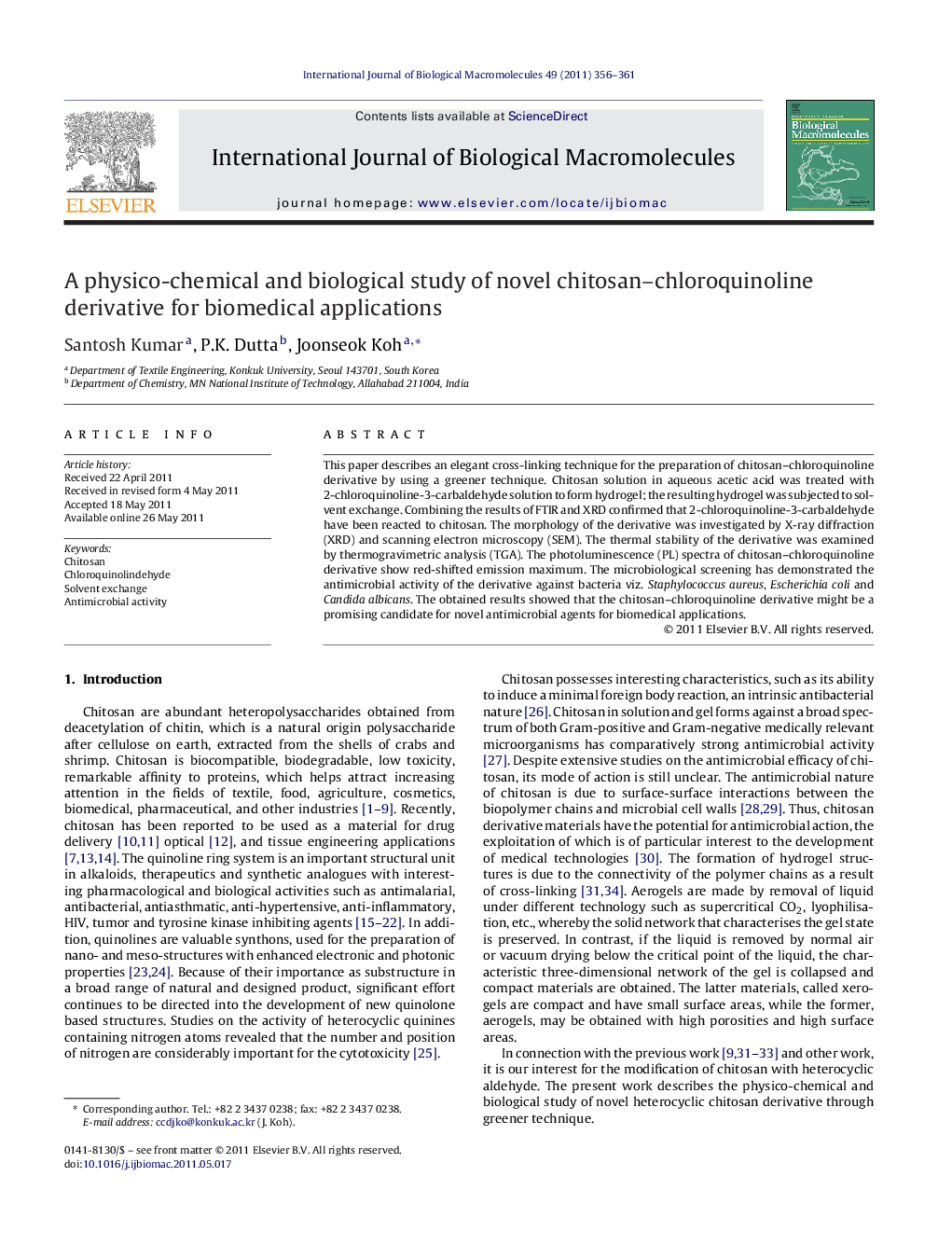| Article ID | Journal | Published Year | Pages | File Type |
|---|---|---|---|---|
| 1987160 | International Journal of Biological Macromolecules | 2011 | 6 Pages |
This paper describes an elegant cross-linking technique for the preparation of chitosan–chloroquinoline derivative by using a greener technique. Chitosan solution in aqueous acetic acid was treated with 2-chloroquinoline-3-carbaldehyde solution to form hydrogel; the resulting hydrogel was subjected to solvent exchange. Combining the results of FTIR and XRD confirmed that 2-chloroquinoline-3-carbaldehyde have been reacted to chitosan. The morphology of the derivative was investigated by X-ray diffraction (XRD) and scanning electron microscopy (SEM). The thermal stability of the derivative was examined by thermogravimetric analysis (TGA). The photoluminescence (PL) spectra of chitosan–chloroquinoline derivative show red-shifted emission maximum. The microbiological screening has demonstrated the antimicrobial activity of the derivative against bacteria viz. Staphylococcus aureus, Escherichia coli and Candida albicans. The obtained results showed that the chitosan–chloroquinoline derivative might be a promising candidate for novel antimicrobial agents for biomedical applications.
► Preparation and characterization of chitosan-chloroquinoline derivative. ► Positive antimicrobial activity. ► Biomedical applications.
